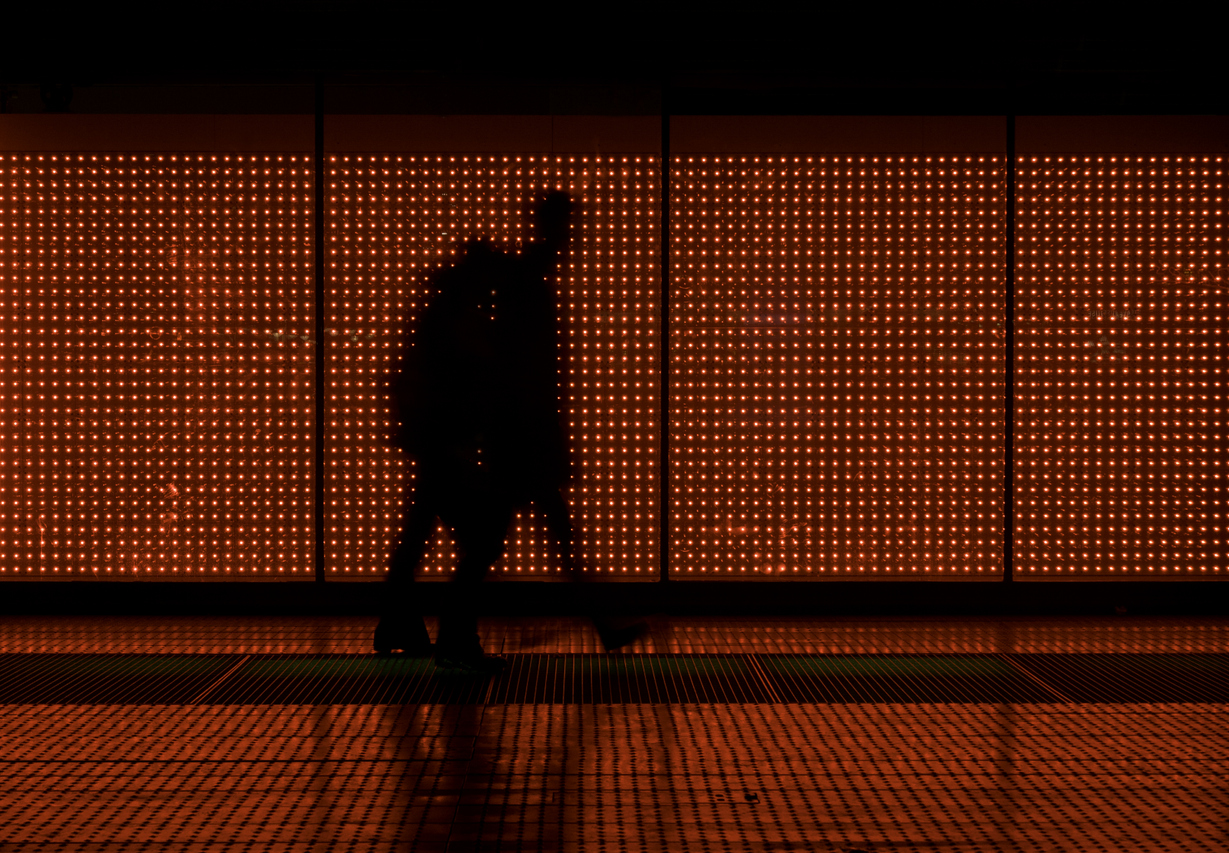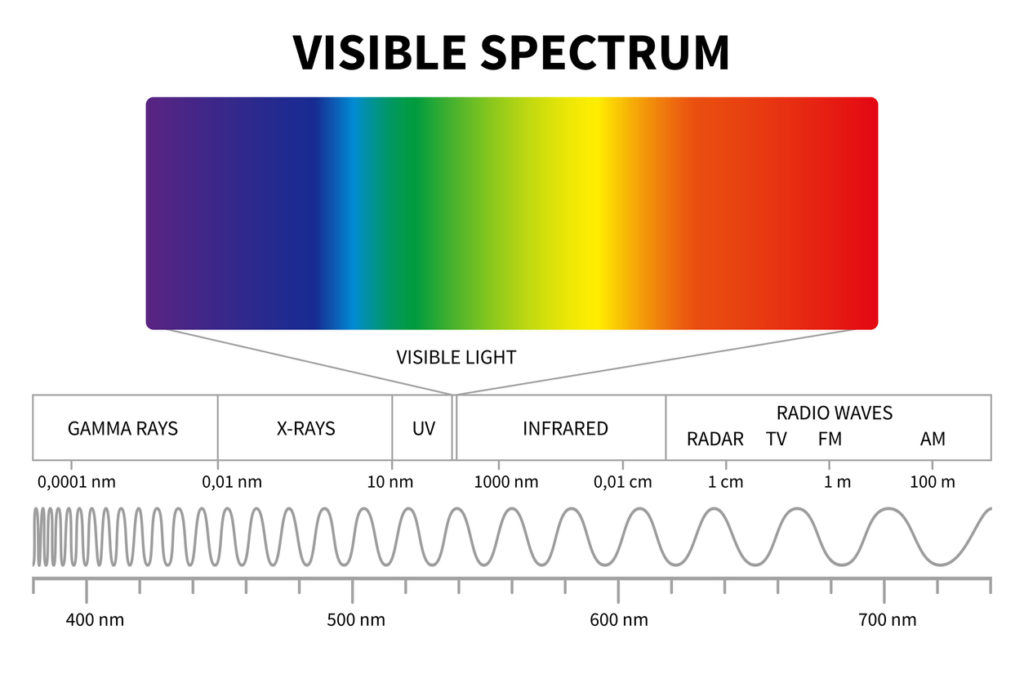Does Red Light at Night Help You Sleep?

You’ve probably heard that bright light too close to bedtime may negatively impact your sleep quality and your internal clock. But did you know that not all light is created equal? Our sleep and internal clock (also known as our circadian rhythm) are not only affected by how bright a light source is, but also by the wave length of light.
Light is made up of tiny particles that travel in waves. These waves radiate energy that varies in length and intensity. While all types of bright visible light may affect sleep-wake patterns, humans are especially sensitive to shorter wavelength light – especially blue-violet light wave-lengths.

Blue Light and Sleep
Blue light exposure in the morning hours can increase alertness and improve performance, whereas nighttime bright blue light can inhibit sleep-supporting hormones such as melatonin while simultaneously increasing stress hormones such as cortisol.
For example, a study by researchers from the University of Arizona found that 30-minutes of blue light exposure during the day promoted alertness and enhanced working memory performance in healthy adults. Another study by Harvard University researchers reported similar findings in sleep-restricted college-aged students; short-wave-length blue light during the day improved processing speed, working memory, and other learning abilities. In fact, light therapy glasses and other lighting solutions may support energy in those with delayed sleep phase, jetlag, and even shiftwork.
On the opposite end of the spectrum, blue light has a dark side, too. Several studies have shown that excessive blue light exposure too close to bedtime can trick our brain into thinking it’s daytime. This short wavelength light has been shown to suppress melatonin and phase delay our circadian rhythms – pushing us to both fall asleep and wake up later. It’s therefore not surprising that lenses that block bright blue light have been shown to improve sleep.
Red Light and Sleep
Short blue wave-length light only makes up about one-third of the observable light spectrum. What is the effect of other light wave-lengths on sleep and circadian rhythms? As previously discussed, the human circadian rhythm is especially sensitive to shorter wavelength blue light. Longer wavelength red light is therefore theorized to have a minimal effect on most physiological processes – especially the sleep-wake system.
Surprisingly, recent preliminary evidence suggests that red light may also affect circadian rhythms and sleep-wake patterns. So, can red light help you sleep at night? And, similar to blue light, can excessive bright red light close to bedtime actually worsen sleep? Let’s explore the science.
The Potential Benefits of Red Light on Sleep
Preliminary studies investigating the role of longer wave-length red light therapy on sleep have been encouraging. Authors of a 2012 study published in The Journal of Athletic Training investigated whether red light irradiation can aid sleep quality, melatonin levels, and endurance performance in Chinese female basketball players. After 14 days of whole-body irradiation with red light treatments, participants exhibited significantly improved self-reported sleep quality and elevated serum melatonin levels compared to placebo. Although promising, this study has several limitations including a very small sample size (20 total participants) and a lack of objective sleep measurement that is known to be more accurate than self-report.
Another study found that red light at night may improve sleep inertia the following morning. Sleep inertia is the “heavy” feeling of grogginess you may experience when you first wake up after sleeping. You may feel a lingering sense of tiredness and disorientation along with an inability to get out of bed to hit the ground running. The study published in the Nature and Science of Sleep examined whether saturated red-light exposure either during sleep or immediately upon waking up would alleviate sleep inertia when compared to a control (dim light) condition. As hypothesized, the authors found that red light delivered through closed eyelids improved performance and sleep inertia when compared to the control condition. Importantly, the red light did not have any harmful effects on melatonin.
These findings suggest that red light may mitigate sleep inertia upon waking without suppressing melatonin. Similar to the previous study, the major limitation of this work included a small sample size (only 30 total participants) and no objective sleep-wake measures.
Conclusions
Although preliminary research on red light therapy for sleep is encouraging, it’s still unclear what the optimal “dose” of red light might be for most people — both brightness and wavelength can have distinct effects on sleep. The research is still in its infancy and larger trials are needed to understand whether excessively bright red light (similar to blue light) may negatively affect sleep and circadian rhythms.
If getting better quality sleep and getting to sleep faster are your goals, it may be a good idea to start with limiting your exposure to bright light in the 3 hours prior to sleep before trying red light therapies. You may also want to make other adjustments to your evening and bedtime routines to support your sleep-wake patterns. You can start by reading our article on the top 10 tips for practicing good sleep hygiene. And, if you’re short on time, here’s an abbreviated list to get you on your way to a better night’s sleep:
- Consistency is key: stick to a sleep schedule (even on weekends).
- Keep active at the right time: exercise daily, but any strenuous exercise should take place no later than 3 hours before bedtime.
- Cut the stimulants: avoid caffeine and nicotine after 2PM.
- …And the alcohol: avoid alcoholic drinks before bed.
- Stay out: only use the bedroom for sleep and intimacy.
- Think dark or dim: limit the use of bright lights in the 3 hours before bedtime.
- Daytime light: daylight helps regulate the circadian rhythm; step outside into natural sunlight in the morning for at least 15-30 minutes.
- Nap times: naps may help give a quick refresh, but avoid them after 3PM.
- Relax with a ritual: unwind before bed with a hot bath and create a ritual like reading or listening to relaxing music before bed.
- Create a sleep sanctuary: ensure your bedroom is comfortable, dark, cool, and quiet.
SleepScore Labs Solutions
Download the free SleepScore App for insights and articles on how well you sleep, the quality and quantity of your sleep cycles, and sleep improvement progress with science-backed tips and insights. Download it for free from App Store and Google Play Store!
You can also visit the SleepScore Store for a wide range of sleep-promoting products carefully curated by SleepScore Labs’ team of researchers including lighting solutions, white noise machines, and more to support your sleep-wake schedule!
Sleep well!